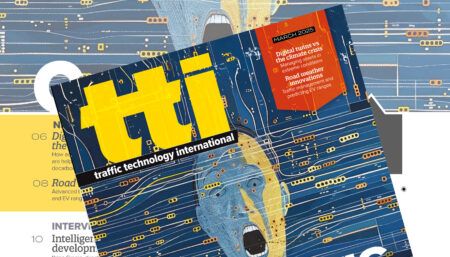The USA’s automotive and intelligent transportation industries are urging the Federal Communications Commission (FCC) to reject a petition that calls for new privacy and cybersecurity rules for dedicated short range communications (DSRC) in the 5.9GHz spectrum band.
ITS America (ITSA) and other leaders in the intelligent transportation community have united to call on the FCC to deny a request by Public Knowledge and the New America Foundation for an ’emergency stay’ on the use of DSRC in the 5.9GHz spectrum band. The 5.9GHz band is reserved for transportation uses, but there are growing pressures for it to be open-for-use by commercial applications.
The petition was made in a joint FCC filing by ITSA, the Alliance of Automobile Manufacturers and the Association of Global Automakers. The filing comes at a pivotal moment as many ITS technologies prepare to go mainstream as a critical part of the Internet of Things (IoT). General Motors plans to introduce DSRC in some of their model year 2017 vehicles, and several road agencies have already, or are in the process of, deploying the technology at intersections, waystations and other safety hotspots.
The US Department of Transportation (USDOT), state transportation agencies and the intelligent transportation industry are seeking to make DSRC a nationwide standard for all vehicles and traffic control systems, allowing cars to communicate with one another (vehicle-to-vehicle), traffic lights (vehicle-to-infrastructure), and even pedestrians and cyclists (vehicle-to-X) at close distances, in order to prevent crashes and reduce congestion. The ITS and auto industries argue that DSRC systems for V2X communications do not collect, transmit or store any information that is linkable to an particular person or vehicle and therefore does not raise consumer privacy issues, and that the technology already incorporates robust security and privacy safeguards. The transport sector also points out that estimates suggest that DSRC-based systems could address up to 80% of unimpaired crash scenarios, saving thousands of lives each year.
The filing to the FCC reads, ‘Congress, the commission, state highway authorities, and federal agencies with primary jurisdiction over national transportation matters have repeatedly concluded that DSRC is integral to the deployment of intelligent transportation systems and best suited to achieving the public safety and related national transportation goals that underlie this national initiative. The commission should not deliberately halt or otherwise compromise the significant progress with respect to DSRC made to date.’
ITSA president and CEO Regina Hopper (pictured) commented, “It is essential that the intelligent transportation revolution, powered in no small part by the 5.9GHz safety spectrum, continue. From saving lives to reducing emissions to easing traffic congestion, the full promise of intelligent transportation is transformative. Such a move would be reckless and unwarranted, undermining the clear public interest.”




